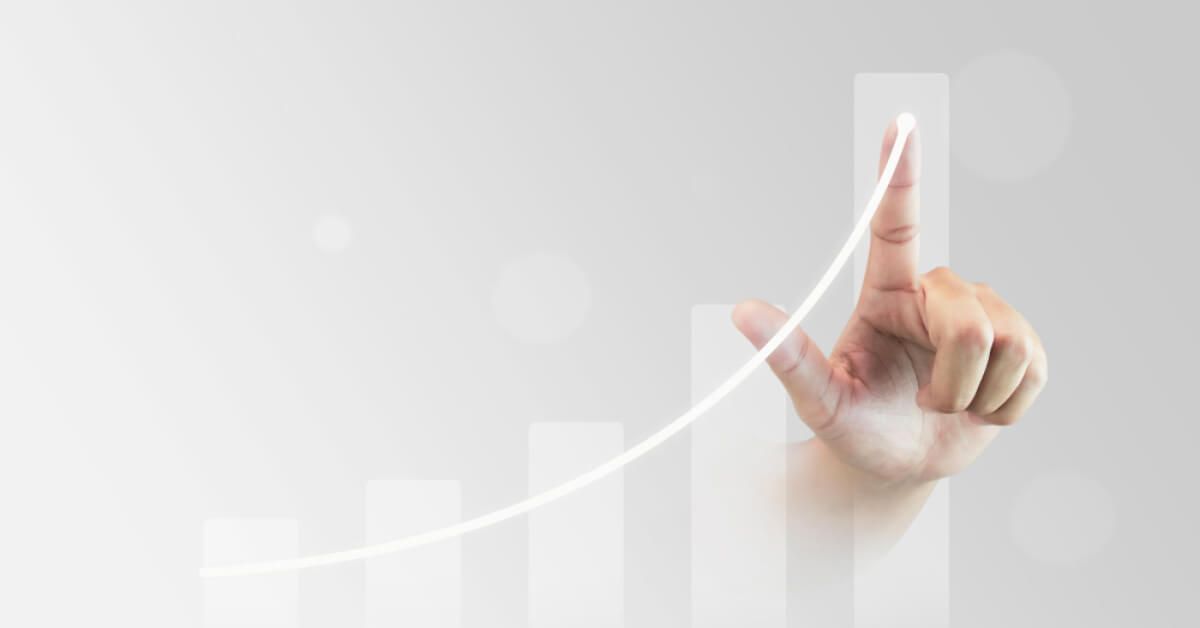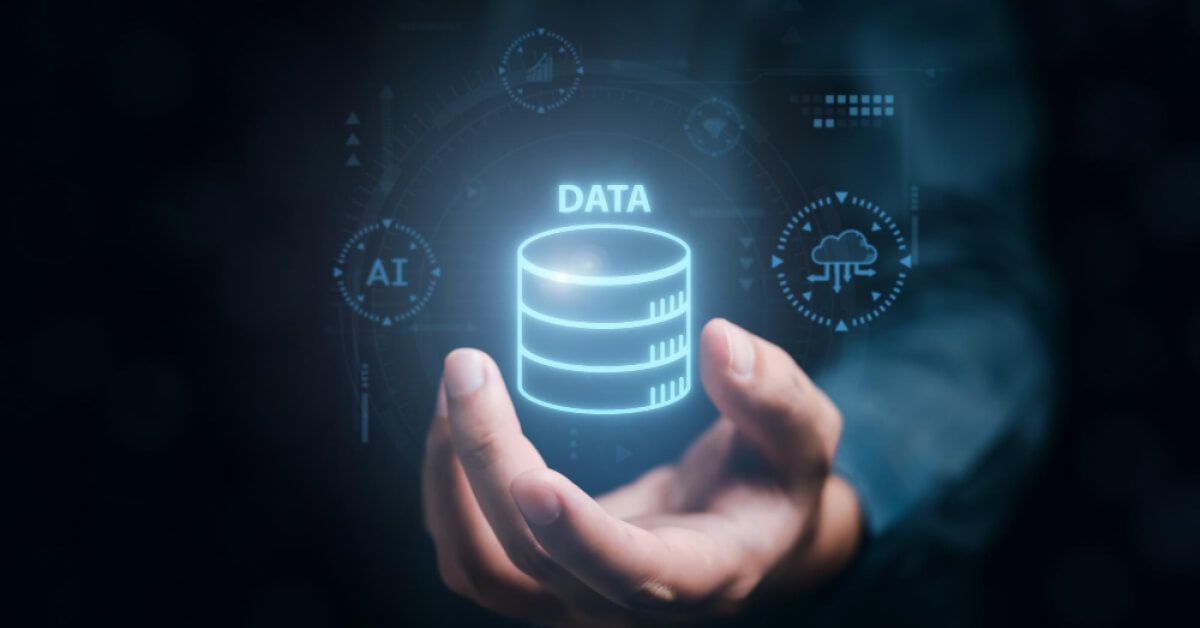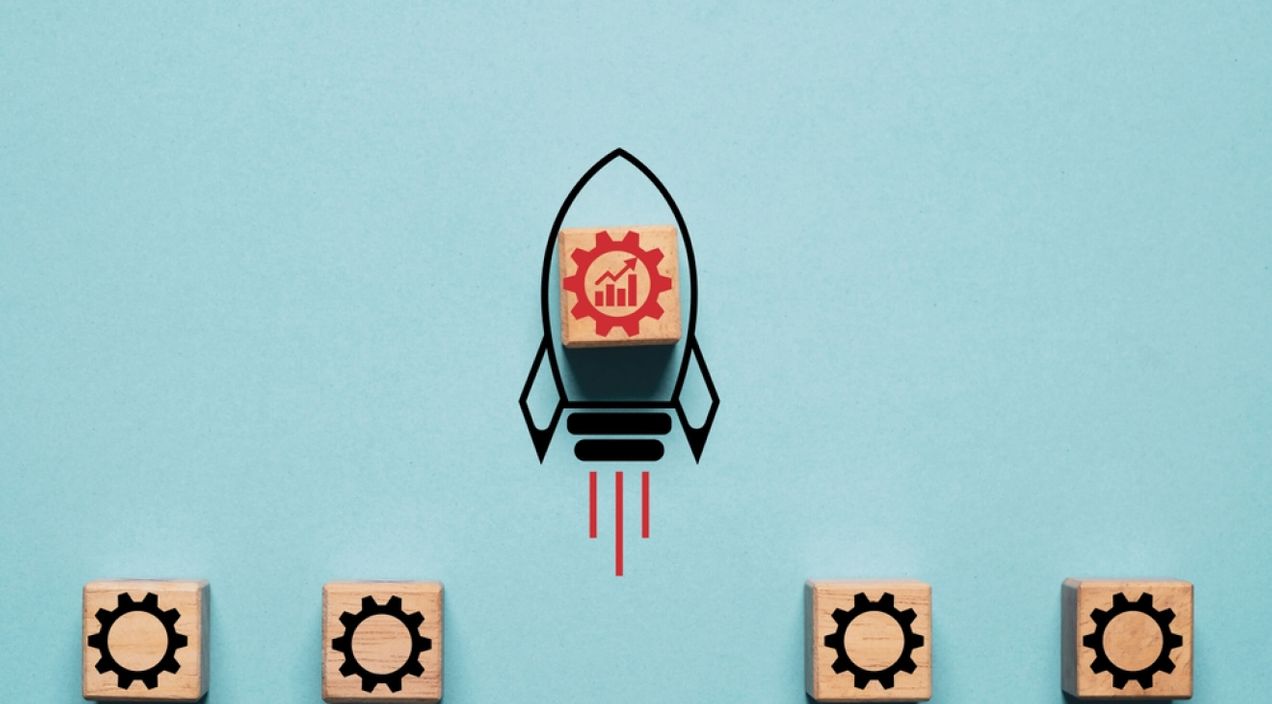HR analytics: How to turn people data into performance in 2025

Ever tried solving a jigsaw puzzle without the box cover? You might get the edges done, maybe a few clusters here and there—but without seeing the full picture, every move feels like guesswork. Frustrating, right?
That’s what managing people without data feels like.
You might have all the right pieces—great talent, strong policies, solid intuition—but without visibility into patterns, trends, and insights, you’re just hoping it all fits. HR analytics is that box cover. It helps you see the bigger picture, guiding smarter decisions around hiring, engagement, retention, and beyond.
In this blog, we’ll break down what HR analytics really means, why it’s a game-changer for modern HR leaders, and how to start using it—not just for reports, but for real impact.
TL;DR
What are HR analytics, and why do they matter today?

TL;DR
HR analytics turns workforce data into actionable insights, replacing gut instinct with evidence-based decisions. It links employee behavior to business outcomes, improving hiring quality, engagement, and productivity.
By identifying trends like attrition risks and skill gaps, HR analytics enables smarter planning, fairer decisions, and proactive strategies, helping HR evolve from an administrative function to a strategic partner driving performance.
HR analytics is the process of collecting, analyzing, and interpreting human resources data to improve data-driven decisions related to people. It blends HR and data analytics to help organizations understand patterns in employee behavior, performance, and engagement, turning raw numbers into meaningful business insights.
- From instinct to impact: Many HR decisions used to be based on "what feels right." But with analytics in HR, teams can validate their hunches with actual data, reducing workplace bias and improving consistency. Whether it’s promoting a manager or restructuring a team, the data-backed route often leads to better outcomes.
- Linking people to performance: HR analytics helps connect the dots between employee behavior and business performance. For example, you can measure how training impacts productivity or how engagement scores correlate with sales. This kind of human resources data analytics gives HR a seat at the strategy table—backed by metrics, not just mission statements.
- Smarter recruitment and onboarding: With the right HR data analytics, you can track which sourcing channels yield high performers or identify bottlenecks in the hiring process. This improves not just hiring speed, but quality too, ensuring the right people land in the right roles, faster.
- Predicting and preventing attrition: Using human resource analytics, teams can spot early warning signs of disengagement or employee burnout. It's so critical because global employee engagement declined to 21% in 2024, with disengagement costing the world economy $438 billion in lost productivity, according to Gallup.
- Sharper workforce planning: HR analytics allows you to forecast future talent needs, identify skill gaps, and understand workforce costs at a granular level. It’s about being proactive, not reactive—ensuring your people strategy evolves with your business.
The evolution of HR: From intuition to intelligence

HR has come a long way from the days of paper resumes and watercooler conversations driving decisions. For years, people and human resource management relied heavily on instinct—leaders promoted those they liked, interventions were reactive, and success was often measured by vague metrics like “morale.” While people's intuition still matters, relying on it alone no longer cuts it in today’s data-driven landscape.
The shift began when organizations realized that gut feelings couldn’t scale with complexity. That’s where HR analytics entered the picture. As more HR systems went digital, the opportunity to gather insights from employee data became too significant to ignore.
Slowly, HR evolved from an administrative function into a strategic partner, thanks to HR and data analytics.
Today, with HR analytics tools that can track everything from candidate experience to exit trends, HR analytics has become essential for data-driven hr. Analytics enables hr professionals and hr leaders to make evidence-based decisions that directly impact hiring, development, engagement, and retention. In short, HR’s role has transformed—from being the heart of the company to also being its brain.
Types of HR analytics: Descriptive, predictive, and prescriptive
Not all HR analytics is created equal. Different types of analysis serve different purposes—some help you understand what happened, others help you see what might happen next, and a few even guide what you should do about it.
Let’s break down the three main types of HR data analytics.
1. Descriptive analytics
This is the “what happened” layer of HR diagnostic analytics. It looks at historical data to uncover trends in turnover, absenteeism, employee performance, or engagement. With human resources data analytics, descriptive reports help you understand how your workforce has behaved over time, forming the foundation for deeper insights.
2. Predictive analytics
Predictive HR analytics uses patterns in your current and past HR data to forecast what might happen next. It can help identify which employees are at risk of leaving or which candidates are most likely to succeed. This kind of forward-looking HR analytics enables proactive interventions and smarter talent planning.
3. Prescriptive analytics
Prescriptive analytics goes one step further—it doesn’t just tell you what’s likely to happen, but also suggests what actions to take. By combining HR data analysis and data analytics with advanced modeling, it can recommend engagement strategies to reduce attrition, optimize training, or even personalize career development paths for employees.
What data do you need to get started with HR analytics?

TL;DR
To start HR analytics, focus on key people data: demographics, roles, tenure, pay, and exits to spot trends and risks early.
Add hiring funnel metrics, engagement scores, performance reviews, and attendance patterns. Together, these datasets reveal satisfaction drivers, skill gaps, and attrition risks, enabling smarter hiring, retention, and workforce planning without needing a complex data setup.
You don’t need a massive data warehouse to begin your HR analytics journey. Starting with the right types of people data makes all the difference. The goal is to collect information that can help answer real questions about your workforce and guide smarter decisions.
- Core HR data: Start with the basics: employee demographics, job roles, tenure, salary bands, departments, and exit dates. This foundational layer of HR data analytics helps track workforce trends, diversity, attrition patterns, and role distribution—great for spotting red flags early.
- Recruitment and onboarding data: Include time-to-hire, source of hire, offer acceptance rates, and onboarding completion stats. These metrics give insight into how efficient and effective your hiring funnel really is. It’s a goldmine for human resources data analytics focused on improving talent acquisition.
- Engagement and feedback data: This covers survey scores, pulse check-ins, eNPS, and open-ended employee feedback. When analyzed through HR and data analytics, this input reveals what drives satisfaction, what’s broken, and where improvements are most needed.
- Learning and performance data: Track performance reviews, goal completion, promotions, and learning module participation. When layered into your human resource analytics strategy, this data helps link individual growth to organizational outcomes.
- Absenteeism and attendance: Unplanned absences, leave types, and sick day patterns can signal burnout, disengagement, or even management issues. In short, these often-overlooked metrics are key signals in a robust workforce analytics in HR approach.
How to build an HR analytics strategy from scratch?

Starting from scratch? Good. That means no legacy clutter—just clean intention. Building a thoughtful HR analytics strategy isn’t about collecting more data, but aligning the right data with business priorities from day one.
- Align with business goals: Your human resources data analytics strategy should reflect what matters most to your leadership, whether that’s reducing attrition, improving DEI, or boosting productivity. Define clear questions you want to answer before diving into metrics.
- Audit your current data: Take stock of what data you already have—employee profiles, surveys, performance records, etc. This helps you identify gaps and avoids starting from zero. A good HR and data analytics strategy builds from what’s already available.
- Choose key metrics to track: Don’t chase every metric. Focus on ones that align with your goals—like time-to-hire, internal mobility, or engagement scores. Strong HR data analytics starts with fewer, more relevant data and numbers that actually guide decisions.
- Invest in the right tools: From spreadsheets to advanced dashboards, your tech should match your maturity. Look for platforms that integrate well, visualize trends, and make HR analytics accessible to non-analysts across your team.
- Build a data-first culture: Even the best analytics fail if no one uses them. Train HR teams to interpret insights, encourage data-backed decisions, and embed human resource analytics into regular workflows and reviews.
The most impactful metrics HR teams should track
TL;DR
Focus on key HR metrics that align with business goals: turnover, time-to-hire, engagement, and internal mobility reveal workforce health, hiring efficiency, and growth opportunities.
Track absenteeism, diversity, and training completion to spot burnout, ensure fairness, and measure development impact. Together, these insights guide smarter decisions, improve retention, and foster an engaged, high-performing workforce.
Great HR analytics starts with tracking the right data, not just the easiest to measure. The metrics you choose should tie directly to business goals and help you answer meaningful people's questions. Here are seven that matter most in 2025.
- Turnover rate: This tells you how many employees are leaving—voluntarily or involuntarily—over a given period. By analyzing this metric through HR data analytics, HR teams can identify problem areas like toxic teams, disengagement, or weak onboarding.
- Time-to-hire: A classic metric in human resources data analytics, time-to-hire measures the number of days between posting a job and accepting an offer. It reflects recruitment efficiency and helps you spot bottlenecks in your hiring funnel.
- Employee engagement score: Usually gathered from surveys or pulse check-ins, this metric indicates how connected employees feel to their work and company. With human resource analytics, teams can track engagement trends by team, tenure, or even manager.
- Internal mobility rate: This measures how often employees move into new roles internally. A strong HR analytics program tracks this to assess career growth opportunities and whether you're building from within or constantly hiring externally.
- Absenteeism rate: Frequent unplanned absences can signal employee burnout, disengagement, or management issues. Analytics in HR helps flag patterns early, giving you time to intervene before productivity or morale takes a hit.
- Diversity and inclusion metrics: Tracking representation across gender, race, age, and pay bands ensures fair practices. With HR and data analytics, HR teams can go beyond surface stats and uncover systemic gaps or equity issues in hiring and promotion.
- Training and development completion: This shows how actively employees engage with learning programs. Combined with performance data, human resources data analytics can reveal whether training actually drives results or just checks a box.
How to connect HR data to business performance?
HR metrics only become meaningful when they influence business outcomes. That’s where the real value of HR analytics lies—translating people data into insights that drive revenue, productivity, and retention. Here’s how you bridge that gap between HR and the bottom line.
- Start with business goals: Begin by asking: What does the business care about right now—growth, cost savings, innovation? Align your human resource analytics approach to support these objectives with relevant workforce insights.
- Map people metrics to outcomes: Link HR metrics like engagement, attrition, or absenteeism to business KPIs such as sales, customer satisfaction, or project delivery. This step proves the true impact of analytics in HR beyond just reporting.
- Use cross-functional data: Integrate HR data with finance, operations, or sales metrics. When HR and data analytics work across departments, you get a holistic view, like how training investments influence productivity or how burnout affects revenue.
- Look for patterns, not just numbers: Track correlations over time. For instance, if low engagement consistently aligns with missed targets, that’s a red flag. This kind of trend-tracking is where HR data analytics becomes a strategic driver.
- Create easy-to-read dashboards: Visualize the connections using real-time dashboards and reports. Make it simple for leaders to see how people's issues are influencing business performance, turning human resources data analytics into a conversation starter.
- Share stories with data: Don’t just present charts—tell stories. Show how a retention strategy improved client delivery or how restructuring reduced costs. When HR analytics tells a business-relevant story, leaders listen—and act.
Common mistakes companies make with HR analytics

While HR analytics has huge potential, it’s easy to misstep, especially in the early stages. Many teams rush into dashboards or data pulls without a clear plan, only to feel overwhelmed or underwhelmed by the results.
Here are six common pitfalls to avoid.
- Focusing on vanity metrics: It’s tempting to track feel-good numbers like headcount growth or training hours, but if they don’t tie to business goals, they’re just noise. Good human resource analytics prioritizes metrics that drive action, not just optics.
- Ignoring data quality issues: If your data is inconsistent, outdated, or incomplete, your insights will be too. HR data analytics only works if you invest time in cleaning and maintaining your data sources.
- Using data without context: Looking at employee turnover without understanding why it’s happening can lead to misinformed strategies. Analytics in HR should always pair numbers with narrative, especially when reporting to leadership.
- Not upskilling the HR team: You can have the best tools, but without people who know how to use them, they fall flat. Building a culture of HR and data analytics requires training, curiosity, and cross-functional fluency.
- Treating it as a one-time project: HR analytics isn’t a “set it and forget it” effort. Business needs evolve, and so should your data strategy. Ongoing review and iteration are key to staying relevant and accurate.
- Failing to act on insights: Collecting data without using it to drive change is a missed opportunity. The real ROI of human resources data analytics comes when insights inform policy shifts, talent strategies, and leadership decisions.
HR analytics vs. people analytics: What’s the difference?
They sound similar, and both rely on data, but HR analytics and people analytics aren’t quite the same. One focuses more on HR function efficiency, while the other dives into the broader picture of workforce behavior. Here's how they really differ:
| Aspect | HR analytics | People analytics |
|---|---|---|
| Primary Focus | Focuses on improving HR-specific functions like hiring, retention, and compliance. | Examines how people work, collaborate, and contribute across all levels of the business. |
| Data Sources | Relies on internal HR systems such as HRIS, payroll, ATS, and performance reviews. | Combines HR data with external/internal tools like email patterns, chat logs, and survey sentiment. |
| Used By | Primarily used by HR professionals for process optimization and reporting. | Used by cross-functional teams (HR, Finance, IT, Ops) to improve employee and organizational outcomes. |
| Objective | The goal is to streamline HR operations and provide metrics that guide policy and planning. | Aims to uncover how employee behavior impacts engagement, productivity, and innovation. |
| Scope | Narrower in scope—focused on traditional HR data analytics tied directly to people operations. | Broader and behavioral—touching areas like collaboration, well-being, and leadership impact. |
| Examples of Use | Looks at time-to-hire, training ROI, absenteeism, and turnover rates to guide human resource analytics. | Analyzes burnout risk, communication patterns, and survey feedback for deeper workforce insights. |
| Tools/Methods | Involves dashboards, reports, and tools for tracking human resources data analytics metrics. | Leverages advanced analytics, network analysis, and AI to surface hidden trends in employee behavior. |
How to turn employee feedback into actionable insights?
TL;DR
Centralize all feedback into one system to uncover patterns and prevent gaps. Analyze sentiment and prioritize high-impact issues tied to culture or performance.
Empower managers with team-level insights to address concerns and track progress over time. HR analytics ensures feedback drives real, measurable change, proving its value through improved engagement and organizational outcomes.
Feedback is everywhere, surveys, 1:1s, exit interviews—but most of it sits unused. HR analytics helps translate this raw input into patterns, priorities, and plans. Let’s walk through how you can turn scattered opinions into meaningful action.
- Centralize all feedback sources: Start by gathering survey results, eNPS, performance reviews, and open-text comments into one system. A unified view helps HR data analytics teams detect overlapping issues and prevents key feedback from slipping through the cracks.
- Analyze sentiment and themes: Use text analysis or AI tools to detect recurring words, emotions, and intent. This step makes human resources data analytics more nuanced, moving beyond scores to understand what employees are really saying.
- Prioritize issues by impact: Not all feedback is equally urgent. Use HR analytics to link feedback themes with outcomes like attrition or engagement scores. Focus first on what affects performance or culture most.
- Involve managers in closing the loop: Empower managers with team-level insights so they can discuss concerns directly and transparently. Embedding analytics in HR here creates shared accountability, not just top-down directives.
- Track change over time: Feedback isn’t a one-time task. Track how sentiment and scores shift after action is taken. This is where HR and data analytics prove their ROI—by showing what actually moved the needle.
How to visualize HR data for better decision-making?
Numbers alone rarely spark action, but visuals can. A well-designed dashboard or chart can help stakeholders instantly spot trends, outliers, and priorities. Here's how to make your HR analytics data truly decision-ready.
- Use dashboards for real-time visibility: Live dashboards offer an at-a-glance view of your most critical HR metrics—like turnover, headcount, and hiring progress. They allow teams to track shifts quickly and make informed decisions using human resources data analytics.
- Opt for heatmaps to highlight patterns: Heatmaps are great for identifying engagement gaps, performance scores, or absentee trends across teams or locations. This method of analytics in HR reveals hidden patterns at scale with easy color cues.
- Build story-driven slide decks for execs: When presenting results to leadership, less is more. Use simple visuals to walk them through a narrative—what’s happening, why it matters, and what to do. This keeps human resource analytics focused and digestible.
- Layer filters for deeper slicing: Let users filter by department, tenure, or location in your visuals. This makes your HR data analytics interactive, helping leaders drill down into issues specific to their teams or regions.
- Track change over time with trend lines: Bar charts and line graphs help compare current performance against historical data. Trends help you understand if your HR initiatives are working, and they bring context to your HR analytics story.
- Integrate survey results visually: Use sentiment clouds, scale bars, or segmented pie charts to visualize feedback. Bringing employee voice to life with visuals helps everyone—from HR to C-suite—take action on the insights surfaced through HR and data analytics.
The future of HR analytics with AI and machine learning
AI is reshaping how HR teams use data, not just to report the past, but to predict the future. From spotting turnover risks to personalizing employee experiences, AI is turning HR analytics into a strategic powerhouse.
Here’s what the next chapter looks like.
- Predictive insights over reactive reports: AI can analyze vast amounts of historical and real-time data to forecast attrition, burnout, or hiring needs. This lets HR data analytics move from reporting what happened to predicting what’s next—and acting before problems escalate.
- Smarter, faster talent acquisition: Machine learning helps automate candidate screening, recommend job matches, and identify hiring biases. This shift improves time-to-hire and quality-of-hire while making human resource analytics more equitable and scalable.
- Personalized employee experiences: AI enables tailored learning paths, benefits recommendations, and even internal mobility suggestions based on behavior and goals. It adds a layer of intelligence to human resources data analytics, boosting engagement and retention.
- Real-time feedback analysis: Natural language processing (NLP) helps decode open-text feedback from surveys or performance reviews. AI makes it easy for analytics in HR to surface sentiment trends and urgent red flags in real time.
- Continuous, adaptive HR strategy: As business needs change, AI systems can recommend adjustments to workforce plans, training programs, or team structures. This keeps HR analytics agile and aligned with organizational priorities at every stage.
What to look for in an HR analytics platform or tool?
TL;DR
Choose an HR analytics tool that’s intuitive, integrates all HR data sources, and delivers real-time, actionable insights. Prioritize customizable metrics aligned with your business goals for maximum relevance.
Look for platforms with predictive AI capabilities, strong security, and compliance standards. These features elevate analytics from reporting to strategic decision-making while safeguarding sensitive employee data effectively.
Choosing the right platform can make or break your HR analytics journey. A good tool should do more than just collect data—it should make it easy to explore, understand, and act on it.
Here’s what to prioritize while evaluating your options.
- User-friendly interface: If your team can’t navigate it, they won’t use it. Look for a platform that makes HR data analytics accessible through clean dashboards, simple filters, and minimal training time.
- End-to-end data integration: The best tools pull from multiple systems—HRIS, payroll, ATS, engagement surveys—into a unified view. This gives your human resources data analytics strategy a 360° perspective of the employee lifecycle.
- Real-time insights: Business decisions can’t wait for quarterly reports. Choose a tool that updates in real-time or near-real-time, keeping your analytics in HR current and actionable at any moment.
- Customizable metrics and KPIs: Every organization has different priorities. Your platform should let you define, adjust, and track the HR analytics metrics that matter most to your goals, not just out-of-the-box reports.
- Predictive and prescriptive capabilities: Look for AI-powered features that go beyond dashboards, such as forecasting attrition or suggesting interventions. These elevate your human resource analytics from descriptive to strategic.
- Strong data security and compliance: HR data is sensitive. Make sure the tool follows best-in-class security protocols and is compliant with data protection regulations like GDPR. It’s non-negotiable for any HR and data analytics system.
How CultureMonkey helps you unlock HR analytics through employee feedback
When it comes to decoding employee feedback, CultureMonkey does the heavy lifting for you. It bridges the gap between raw input and real insight, helping you act faster and smarter.
Here’s how it elevates your HR analytics game.
- Real-time pulse surveys with deep insights: CultureMonkey lets you run pulse surveys that capture sentiment as it shifts. It connects this data back to engagement, attrition, and performance, turning feedback into actionable HR data analytics instantly.
- AI-powered sentiment analysis: Its intelligent engine reads between the lines, analyzing open-text responses with natural language processing (NLP). This gives your human resources data analytics efforts a clearer picture of how employees truly feel.
- Customizable templates for every stage: From onboarding to exit, CultureMonkey offers pre-built survey templates tailored to key employee milestones. These fuel consistent analytics in HR while saving you setup time.
- Manager-level insights for local action: Managers can view feedback specific to their teams, identify focus areas, and take timely action. This decentralizes HR analytics and builds shared accountability across the organization.
- Automated reporting for smarter decisions: CultureMonkey generates clean, easy-to-read reports that highlight trends, gaps, and wins. This empowers HR teams with human resource analytics that are both strategic and shareable.
Conclusion
HR analytics isn’t just about crunching numbers—it’s about understanding people better and making smarter decisions that drive business outcomes. As organizations grow more data-rich, the real advantage lies in how effectively you translate that data into valuable insights and action. Whether you're solving attrition issues, enhancing engagement, or improving hiring quality, it all starts with insights you can trust.
If you're ready to go beyond dashboards and actually listen to what your employees are saying, CultureMonkey can help. From real-time feedback analysis to manager-ready reports, it turns feedback into strategy. Start your HR analytics journey the right way—backed by the voice of your workforce.
Summary
FAQs
1. What are the 7 pillars of HR analytics?
The 7 pillars of HR analytics include workforce planning, talent acquisition, employee engagement, performance management, learning and development, compensation analytics, and retention analysis, which are all types of HR analytics. Each pillar uses human resource analytics to guide decision-making and improve outcomes. Together, they form a complete framework for leveraging HR data analytics across the employee lifecycle.
2. What is HR analytics in simple terms?
HR analytics is the practice of using employee data to make informed HR decisions. Instead of relying on gut instinct, HR analytics helps you spot trends, predict outcomes, and improve performance. In short, it's about using human resources data analytics to understand what’s working, what’s not, and what actions to take next.
3. How do I start using HR analytics in my organization?
Start with clear goals—whether it’s reducing turnover or improving engagement. For example, 82% of HR professionals say their organization uses people analytics to assess employee retention and turnover. Gather quality data from your HRIS, surveys, and performance systems. Use a platform like CultureMonkey to analyze feedback. Focus on small wins early on to build trust in your analytics in the HR process and gradually scale to more strategic insights over time.
4. What are the most important HR metrics to track?
Key HR metrics include turnover rate, time-to-hire, employee engagement, absenteeism, training completion, and performance ratings. These help you understand workforce trends and average revenue to make better decisions. Using HR and data analytics, you can link these metrics to business outcomes and address potential human capital risk while making a stronger case for HR's strategic impact.
5. What’s the difference between HR analytics and people analytics?
HR analytics typically focuses on data within HR systems, like performance, engagement, and turnover. People analytics is broader, incorporating data from multiple functions (like sales or finance) to understand workforce behavior in a larger context. Both use human resource analytics principles but differ in scope and application across the business.
6. How does AI improve HR analytics?
HR analytics typically focuses on data within HR systems, like performance, engagement, and turnover. People analytics is broader, incorporating data from multiple functions (like sales or finance) to understand workforce behavior in a larger context. Both use human resource analytics principles but differ in scope and application across the business.



